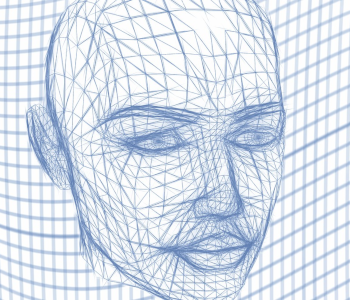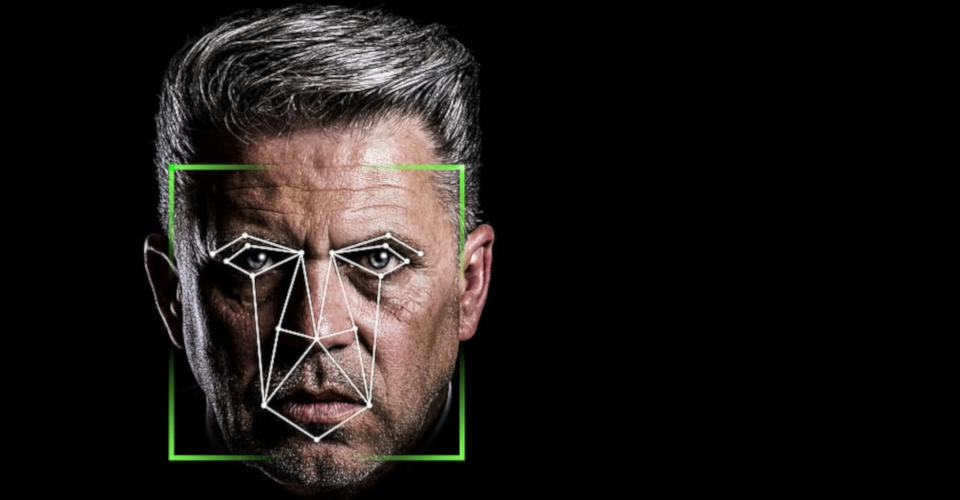Structured Light 3D Scanning: What Is It and How Does It Work?
3D scanning has been around for quite some time, but recent years have seen a sudden boom in the popularity of this technology. Nowadays, we can see 3D scanning used in industrial prototyping, preservation of historical artifacts, filmmaking, and video game developments. Advances in 3D scanning technology have even made it possible to scan an object using just your smartphone.
In this article, we shine the spotlight on one of the most established 3D scanning technologies: structured light scanning. How does this process work, and what is its edge over the other 3D scanning methods?
What is structured light 3D scanning?
Structured light scanning is a 3D scanning technology that uses a single light source that projects multiple lines on the object, all of which are tracked simultaneously by a camera or multiple cameras. This is in contrast to a laser scanner, which emits multiple laser dots on the object one after the other.
The foundations for structured light 3D scanning have been around for several decades, although early models were often crude, too large and expensive, and difficult to use. By the late ’90s, advances in computer and camera technology have made structured light 3D scanning more practical and accessible for small-scale research, commercial firms, and casual users.
The concept of triangulation

Just as with other 3D scanning technologies, structured light 3D scanning is based on the concept of triangulation. By emitting a beam of light on any single point of an object and taking three measurements of the point (including distance and angle), the exact position of the point space can be determined. This basic trigonometric principle has been the foundation of all 3D scanning technologies that are dependent on a stationary source of light.
The simplest application of triangulation is in the use of a single laser pointer for 3D scanning. A laser beam is emitted to a point in the object, the location of which is scanned by two or more cameras. By combining the scanned location from both cameras and the distance of the cameras from one another, the absolute location of the point in space can be determined.
The downside of using a laser pointer for 3D scanning is that each point needs to be measured separately. This can be a needlessly time-consuming process. The fact that cameras can capture multiple points of data simultaneously is the breakthrough that led to structured light 3D scanning- instead of using multiple laser points, a single beam of light can be used instead to create a model of the entire object all at once.
How does structured light 3D scanning work?
Projecting a single beam of light with uniform intensity will not be enough to make a 3D scan of an object – otherwise, we’d all have 3D scanners in our homes. This is because a single beam of light – or even a uniform gradient black to white – will fail to capture the depth of individual features as it does not reflect the drop off of light intensity because of distance.
To solve this gap, structured light scanning projects a finely calibrated pattern made of alternating stripes of light gradients on objects. The very gradual drop off from one stripe to the next allows the cameras to differentiate between the different depth values of the features in an object, creating a more accurate 3D model.
Generating the stripe pattern can be done in either of two ways: by allowing two laser beam fronts to intersect, or by simply using a single light source that passes through a digital spatial light modulator. Either way, the result is a pattern with regular and equidistant stripes of light.
Most casual uses of structured light scanning use white light, as it’s more accessible. However, blue light has become the new standard because of its higher accuracy and its ability to minimize the effects of reflections and transparency.
Creating a 3D model from the pattern created by structured light scanning is not a simple matter and will require the use of a sophisticated phase unwrapping algorithm. This should be a built-in feature of most 3D scanning platforms, the quality of results of which play a huge role in the quality of the produced model.
How does structured light compare to other methods of 3D scanning?
Structured light scanning has become one of the most popular methods of 3D scanning for both casual and commercial users because of how easily it can be done relative to the quality of results that it delivers. Among its other strong points are the following:
1. More accurate than time-of-flight methods
Another 3D scanning method, called time-of-flight, relies on the time it takes for a single beam of light to be emitted, bounced off the object being scanned, and recorded by a sensor. Laser pulse technology has its uses (as we shall see later), but they often have to compromise on accuracy.
2. Faster than laser scanning
In the field of stationary or handheld 3D scanners, it’s simply a choice between laser scanning or structured light scanning methods. While both these methods are very accurate in creating 3D models out of real objects, the time it takes for them to finish scanning the same object can be quite different.
In laser scanning, a single laser beam will strike the object at different points, the position of which will be recorded by cameras. This means that the process will have to be repeated several times to create the entire model. In stark contrast, the cameras used in structured light scanning take all the needed information all at once so you can move on to processing in just a few seconds.
3. Can be reduced to a handheld device
This is something that’s common to both laser scanning and structured light scanning: there are now devices that use these technologies for 3D scanning that are small enough to be carried around. These handheld 3D scanners are a relatively new thing and have greatly made 3D scanning so much more accessible for everyone. Granted, these scanners are not cheap – you can expect to shell out more than $1000 for a desktop-scale version, but more professional-grade models can cost up to $30,00.
Challenges of structured light 3D scanning
1. Sensitive to environmental factors
Just like other 3D scanning technologies that rely on optical sensors, structured light scanning can be notoriously difficult under less than ideal environmental conditions. Scanning an object with shadows or simply having another light source in the surroundings can be enough to throw off the algorithm of a structured light scanner, leading to unsatisfactory results.
2. Sensitive to transparent or reflective materials
How the incident light reflects on the objects being scanned is the main source of information that a structured light scanner processes and uses to generate a model. Thus, any unexpected interactions between light and the object will almost certainly cause problems.
Transparent or semi-transparent surfaces can result in loss of detail in the model, reflective surfaces can cause the light to be reflected away from the camera. There are quick remedies to these problems, such as the use of one-way dimensional diffuser between the light source and the object to eliminate the effects of reflection. In the case of semi-transparent surfaces, the application of a thin opaque lacquer on the object is a common way to preserve the accuracy of the model.
3. Cannot be used for large objects
Handheld and desktop-scale scanners are great for objects that you can actually put on a desktop, but there’s simply no way for you to use them on buildings, houses, and monuments. For large-scale 3D scanning needs, you’ll have to rely on other methods such as LiDAR or photogrammetry.
Applications of structured light 3D scanning
The ease of use of structured light scanning and the accuracy of its results have made it a very popular 3D scanning method across several industries. Some of its more notable uses include:
- Reverse engineering of objects to produce CAD data
- Volume measurement of intricate engineering parts
- Documentation of cultural and historical artifacts
- Motion and environment capture for augmented reality games
- Body measurements for fashion retailing
- Automated optical inspection in high-speed manufacturing lines
- Skin surface measurements for cosmetics research and development
- Wrinkle measurements on various types of fabrics
- Obstacle detection systems on unmanned aircraft, i.e. the Intel RealSense system used by Yuneec
- Facial recognition systems
The fact that structured light technology can be miniaturized into handheld devices means that there are probably more possibilities for this method that are yet to be discovered. With all the hobbyists and casual users getting in on the action, we can expect more fun applications of the technology in the coming years.
Final thoughts
Structured light scanning is only one of several ways that we can turn real-life objects into 3D data that can be manipulated and reproduced using computer software. It’s also one of the simplest methods, which is probably one of the main reasons why it has stuck around for so long and why it continues to be developed.


